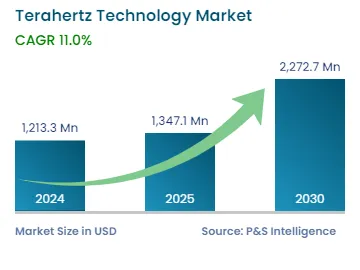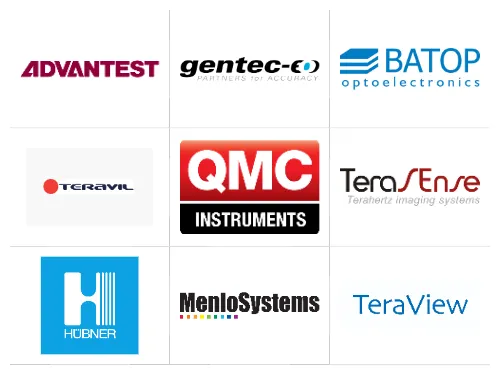Terahertz Technology Market Future Prospects
The Terahertz technology market size stands at an estimated USD 1,213.3 million in 2024, and it is expected to grow at a compound annual growth rate of 11.0% during 2024–2030, to reach USD 2,272.7 million by 2030.
In recent years, THz technology has been perceiving significant applications and advancements on the high-tech front. The technology outlook has the potential to enhance applications ranging from security checks to cancer diagnosis and is capable of easily penetrating several materials, such as biological tissue. The progress is augmented by the increasing potential payoffs of the THz regime for military, non-destructive testing, and security applications.
The usefulness of the THz technology is boosting the market and is also being driven by the growth in the aerospace and defense and homeland security sectors across all regions. Moreover, the surging penetration of the THz technology in medical and satellite communications devices, and the increasing applications of high-end THz devices in research laboratories are trending in the market.
The COVID-19 pandemic created a positive impact on the use of THz imaging in healthcare systems. For example, the U.S. Customs and Border Protection agency is one of the prominent users of the technology, among more than 200 users of the technology, deploying it to secure the U.S. border. Moreover, professionals have developed a technology that detects COVID-19 variants using THz waves by the use of label-free Terahertz metamaterials to discriminate the variants accurately and rapidly.
In 2020, several government organizations raised funds and took various initiatives to launch the latest research in favor of Terahertz technology. Also, the aeronautics and space sector has been propelled by the acceptance of the latest technological advancements like the tiny THz laser for the detection of chemical emissions between stars. Similarly, the Terahertz radar sensor is being built by the aeronautics and space sector to measure water vapor in planetary environments, which shows the increasing graph of the THz technology application in the aeronautics and space and satellite communications sectors.



